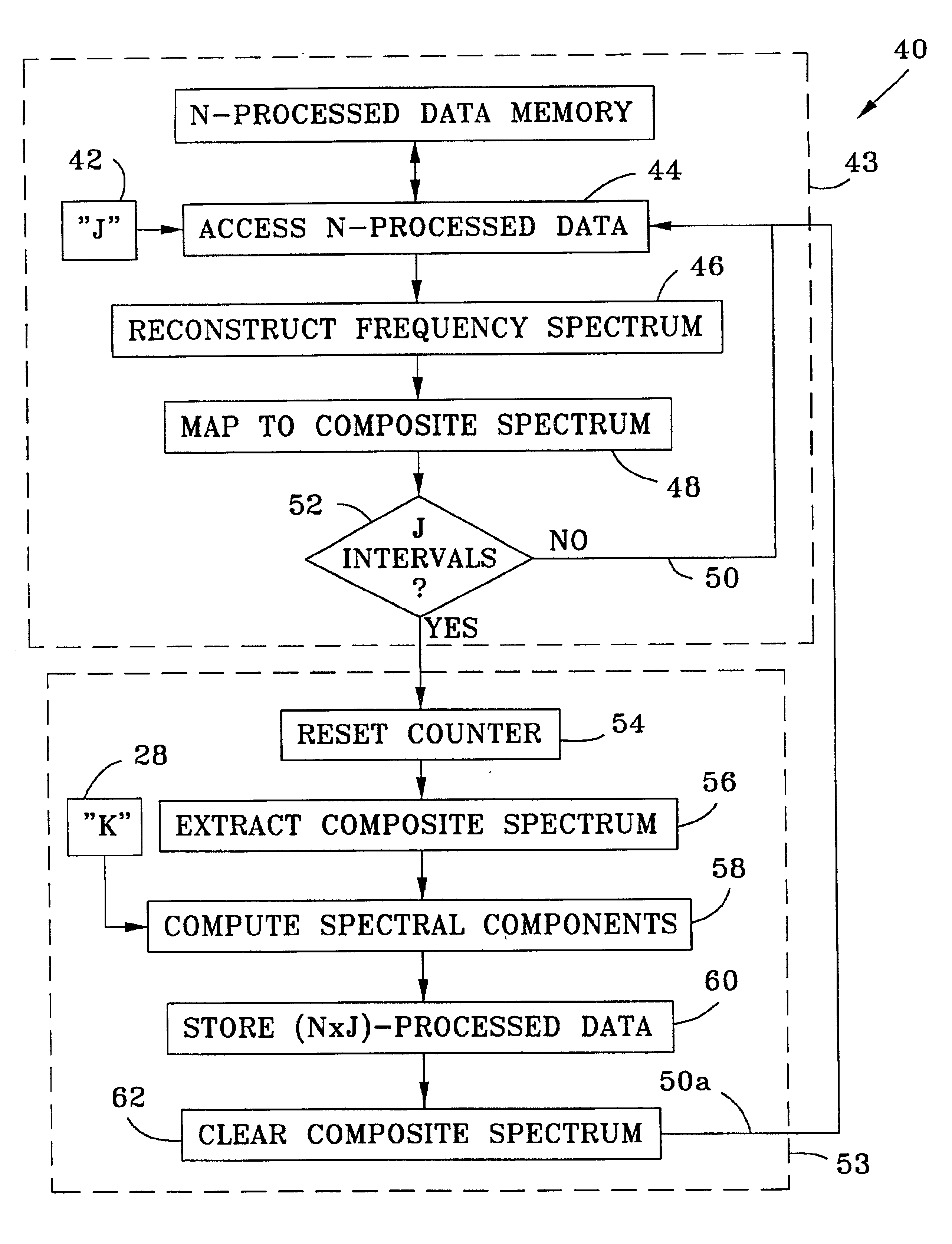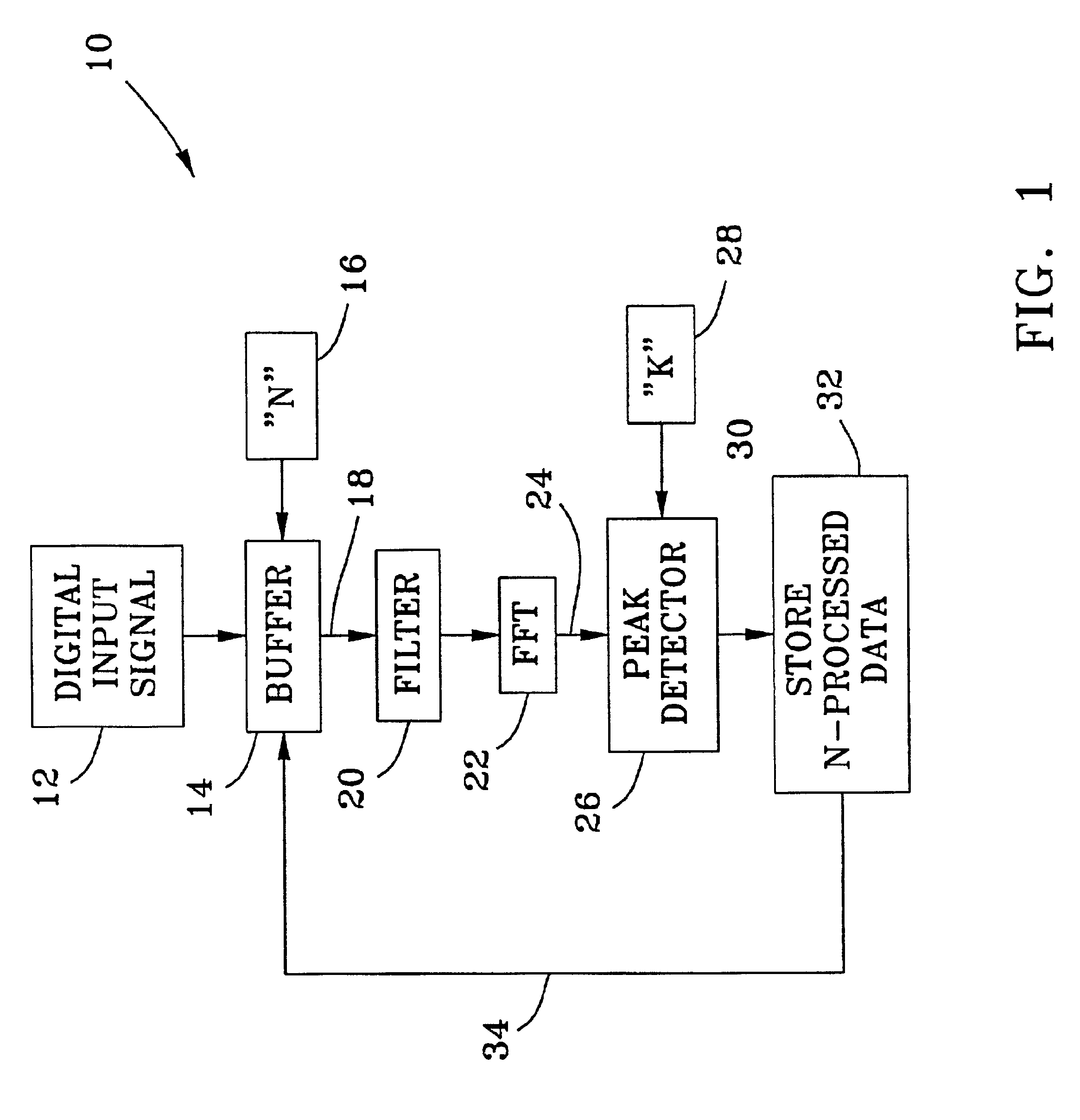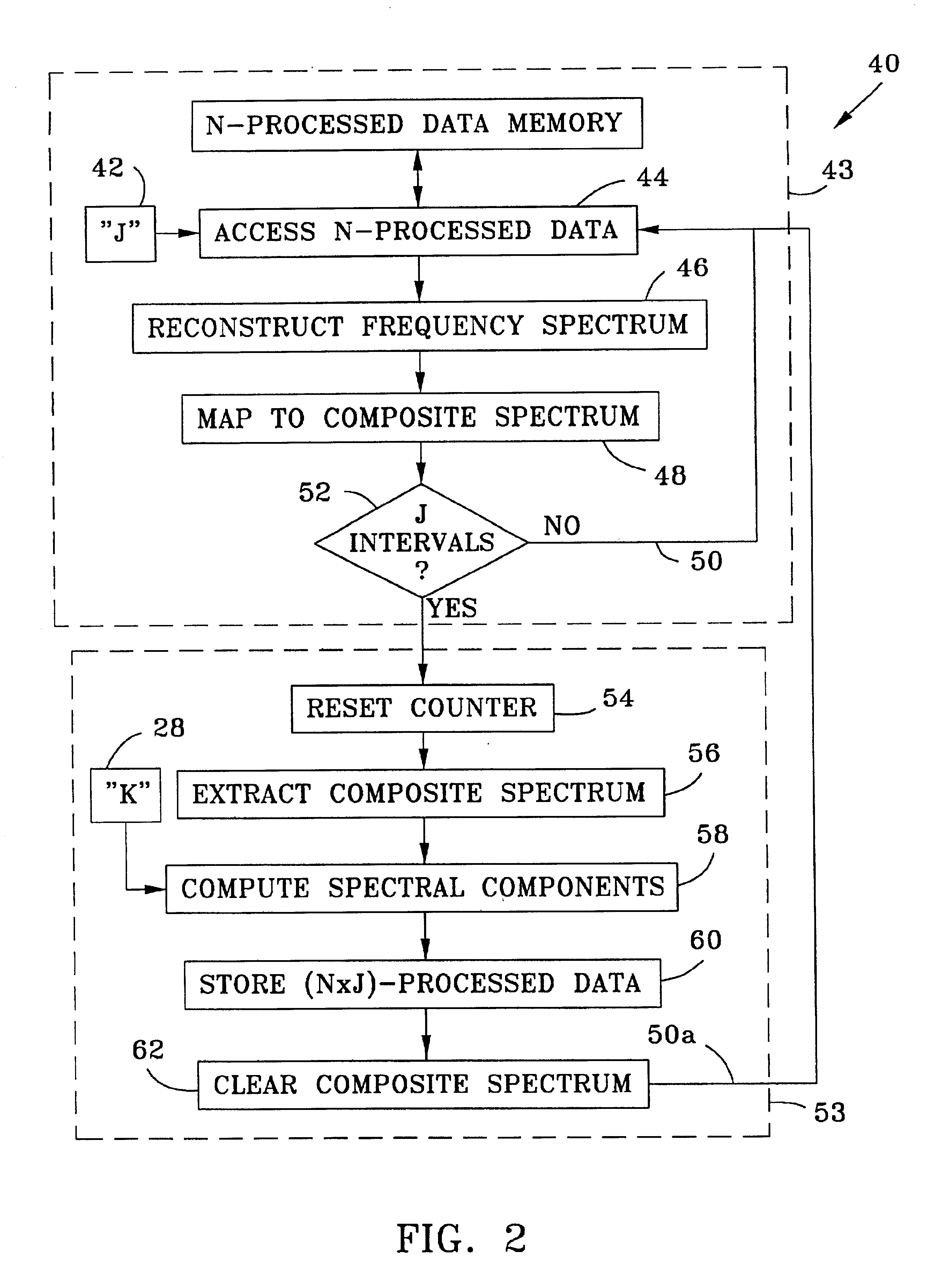Narrowband signal processor
a signal processor and narrowband technology, applied in the field of narrowband signal processing, can solve the problems of inefficient generating general narrowband signal information, inability to accurately determine the correct processing interval for narrowband detection in the frequency domain, and further computational constraints, so as to achieve the effect of effective processing interval variability and computational efficiency
- Summary
- Abstract
- Description
- Claims
- Application Information
AI Technical Summary
Benefits of technology
Problems solved by technology
Method used
Image
Examples
Embodiment Construction
Referring now to FIG. 1 there is shown the method 10 required to obtain “N-processed data” from a digital input signal 12. The signal 12 is buffered at 14 to provide time-sequential, continuous signal segments 18 of length N. Each digitized N-length signal segment 18 is filtered 20 using user-defined and user-specified filtering techniques, and is passed through a FFT 22 to compute the DFT 24 for the N-length signal segment 18. FFT algorithms are well known and the FFT algorithm or device selection does not affect the invention herein. The DFT 24 spectral components are applied to a peak detector to compute a power spectral density at 26. The output 30 comprises the K largest spectral components' respective frequencies, powers, and bandwidths, for the N-length signal segment's DFT 24. The K largest DFT frequencies, powers, and bandwidths 30 for the N-length segment are stored 32 to a memory segment designated N-processed data memory. Storing 32 further includes correlating the N-len...
PUM
| Property | Measurement | Unit |
|---|---|---|
| length | aaaaa | aaaaa |
| frequency | aaaaa | aaaaa |
| frequency spectral content | aaaaa | aaaaa |
Abstract
Description
Claims
Application Information
 Login to View More
Login to View More - R&D
- Intellectual Property
- Life Sciences
- Materials
- Tech Scout
- Unparalleled Data Quality
- Higher Quality Content
- 60% Fewer Hallucinations
Browse by: Latest US Patents, China's latest patents, Technical Efficacy Thesaurus, Application Domain, Technology Topic, Popular Technical Reports.
© 2025 PatSnap. All rights reserved.Legal|Privacy policy|Modern Slavery Act Transparency Statement|Sitemap|About US| Contact US: help@patsnap.com



